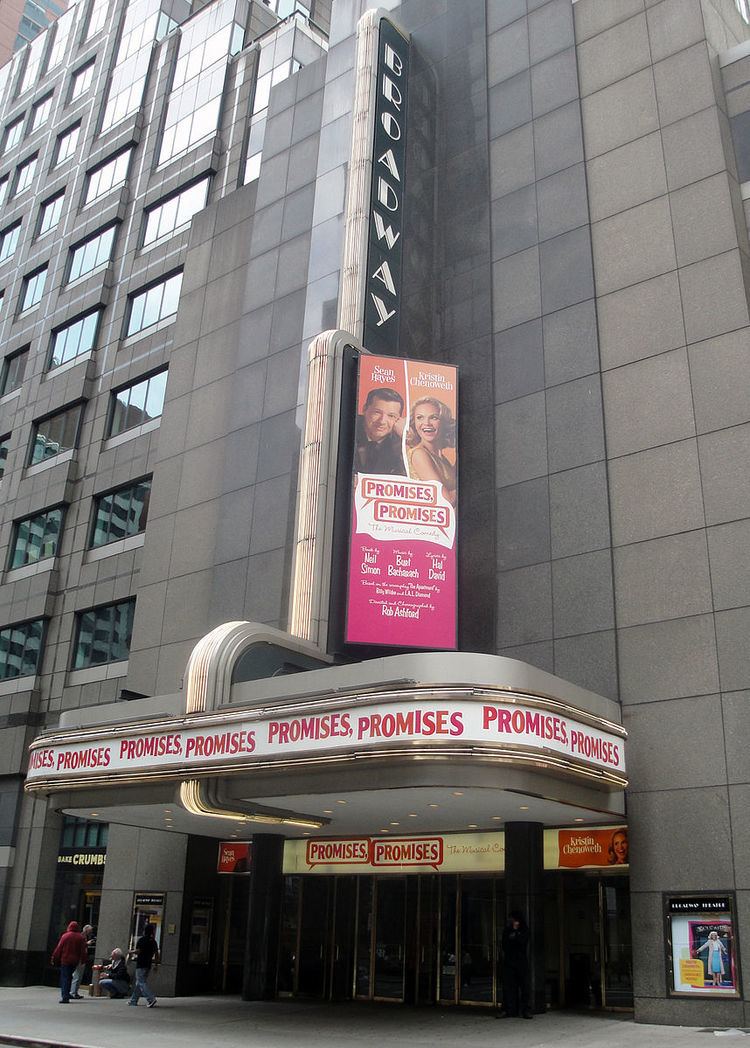Name Eugene Rosa Role Architect | Died 1944 | |
 | ||
Structures Studio 54, Broadway Theatre | ||
Eugene L. De Rosa (1894 – c. 1945) was an Italian American architect. He worked in New York City and specialized in the design of theatres.
Contents
De Rosa's business flourished from 1918 to 1929 and was at its height during the Roaring Twenties, but it was largely destroyed by the Great Depression. During the 1930s he spent some years in London and settled for a while in Naples. Toward the end of World War II he was reported to be back in New York and beginning to work on post-war theatre projects, just before his death.
Early life
De Rosa was born in Calabria, in the far south of mainland Italy, in 1894. While he was still a small child his parents emigrated to the United States, arriving through Ellis Island and settling in New York City, where they were living by 1898. De Rosa had four brothers, Felix, Jerry, Vincent, and John, and also a sister, Sylvia. His brother Felix also became an architect.
Career
By 1918 De Rosa was practising as an architect, quickly choosing to specialize in theatre design. An early project was his Vanderbilt Theatre, New York (1918). By 1919 he was in a partnership called "De Rosa & Pereira", and that year he represented several clients in appeals against decisions of the superintendent of buildings of the City of New York.
During the 1920s De Rosa obtained many more commissions for new theatres. The great driving force during his Roaring Twenties career was "the phenomenal growth in popularity of motion pictures", and his early work included the Times Square (1920), the Apollo on 42nd Street (1920), and Klaw (1921) Theatres. One important design for a site on Hyatt Street in St. George, Staten Island, provided not just a grand new theatre but also stores and offices.
De Rosa's business was largely destroyed by the Great Depression of the 1930s, during which he took the opportunity to travel overseas. He spent some years in London and settled for a while in Naples, where in 1935 he was reported to be "wonderfully helpful" to American and English visitors. His brother Felix De Rosa, also an architect, sold insurance during the Depression.
Before or during the Second World War De Rosa returned to New York, where by 1944 he was said to be working on new theatre projects. However, his death in about 1945 prevented the revival of his career.
Work
Several of De Rosa's theatres are still standing, among them the 1000-seat Lafayette Theatre, Suffern (1924), an Adamesque building with a combination of French and Italian Renaissance influences ornamented in the Beaux Arts manner. An improvement scheme in 1927 added six distinctive opera boxes and further balcony seating. Unlike many others, the Lafayette was spared from demolition and multiplexing and continues to be used as a single-screen movie theatre.
Another surviving work is The Broadway Theatre, New York (1924), originally "B. S. Moss's Colony Theatre".
De Rosa's huge 2,800-seat St. George Theatre, St. George, Staten Island, begun in 1928, cost $500,000 for the theatre alone and was part of a greater development project (an office complex is attached) worth some $2,000,000. The theatre opened on December 4, 1929, only weeks after the Wall Street Crash of 1929, and remains in use. It is now owned by St. George Theatre Restoration Inc., a non-profit organization which aims to restore the building and to develop it as a performing arts and cultural center. Most of the ornate interior was designed not by De Rosa but by Nestor Castro.
